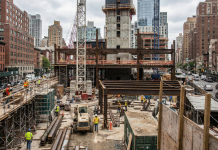Walk any construction site today and you’ll see the same thing: gray hair under hard hats, empty job postings on trailer doors, and projects running months behind schedule.
The industry needs 501,000 additional workers beyond normal hiring to meet 2024 demand. Most companies compete for the same shrinking talent pool.
Taylor Morrison took a different approach: build workers from scratch.
The Math Is Brutal
Over 40% of construction workers retire by 2031. Only 3% of young people want construction careers.
While major builders compete for experienced workers, Taylor Morrison saw a different approach.
Building Workers, Not Just Houses
This summer, Taylor Morrison deployed 60 interns across their operations. These aren’t entry-level positions doing busy work.
Interns follow projects from foundation pour to key handoff. They learn construction management, project coordination, and client relations.
One intern: “I’ve gone from knowing nothing in June to doing this on my own.”
The program creates a talent pipeline for the company.
The Economics Work
Traditional hiring assumes skilled workers exist elsewhere. Companies post jobs and hope qualified candidates appear.
Taylor Morrison creates the workers they need. The internship investment trains people specifically for their processes and builds company loyalty.
The math favors creation over competition.
The Industry Challenge
If other major builders adopted similar programs, the industry could begin addressing its talent shortage. The model scales—larger companies can support more interns, smaller firms can partner with schools.
The housing shortage demands new approaches to workforce development. These homes require skilled workers who currently don’t exist.
The companies building tomorrow’s workforce today win tomorrow’s market. The rest will keep fighting over yesterday’s talent while projects sit unfinished.
The choice determines whether the workforce shortage becomes a temporary challenge or a permanent constraint on industry growth.








